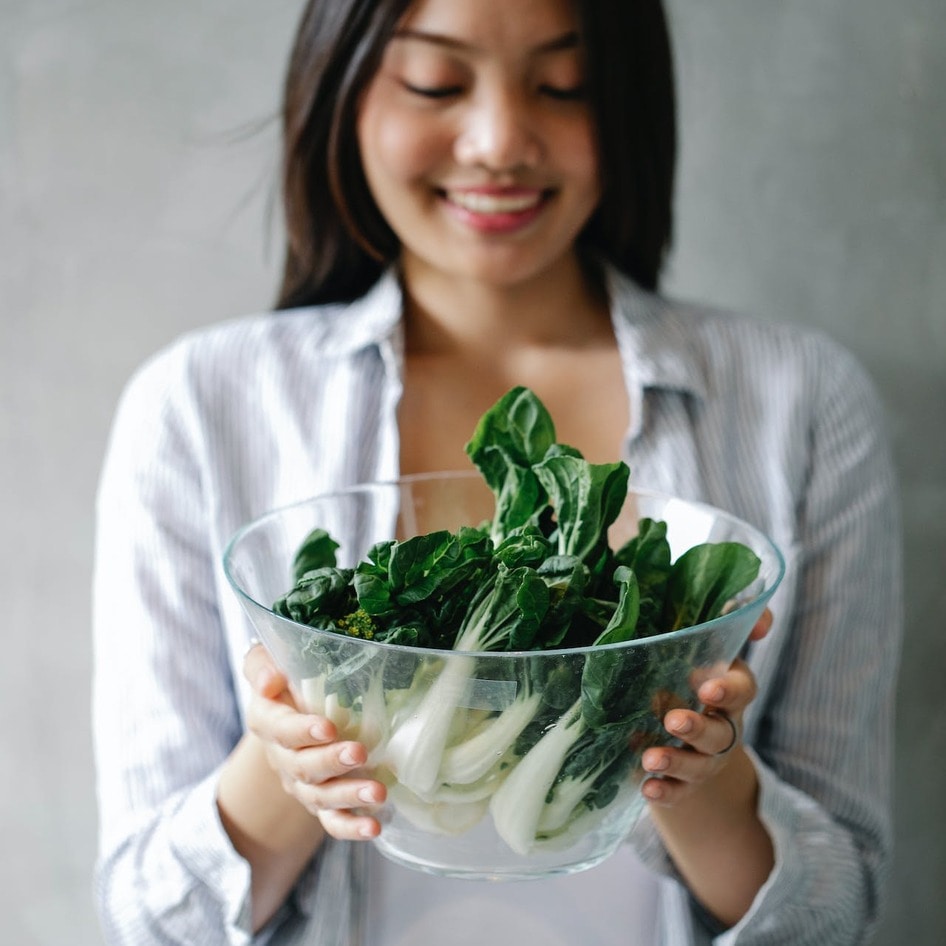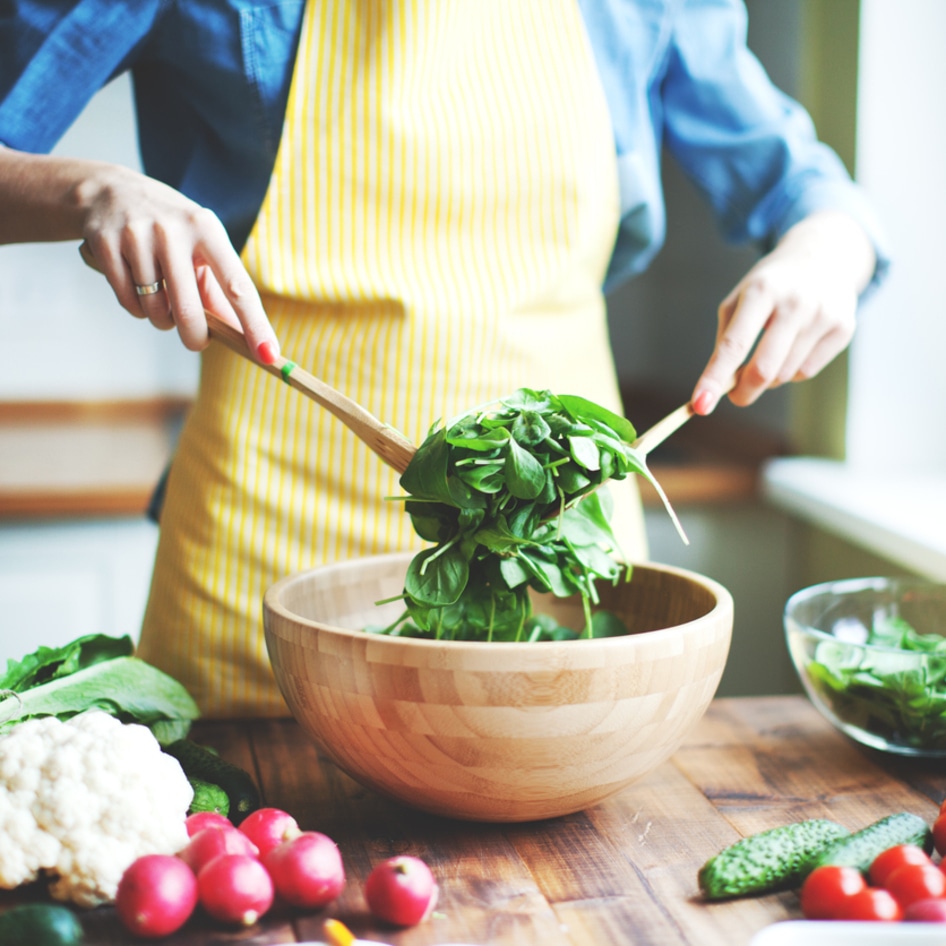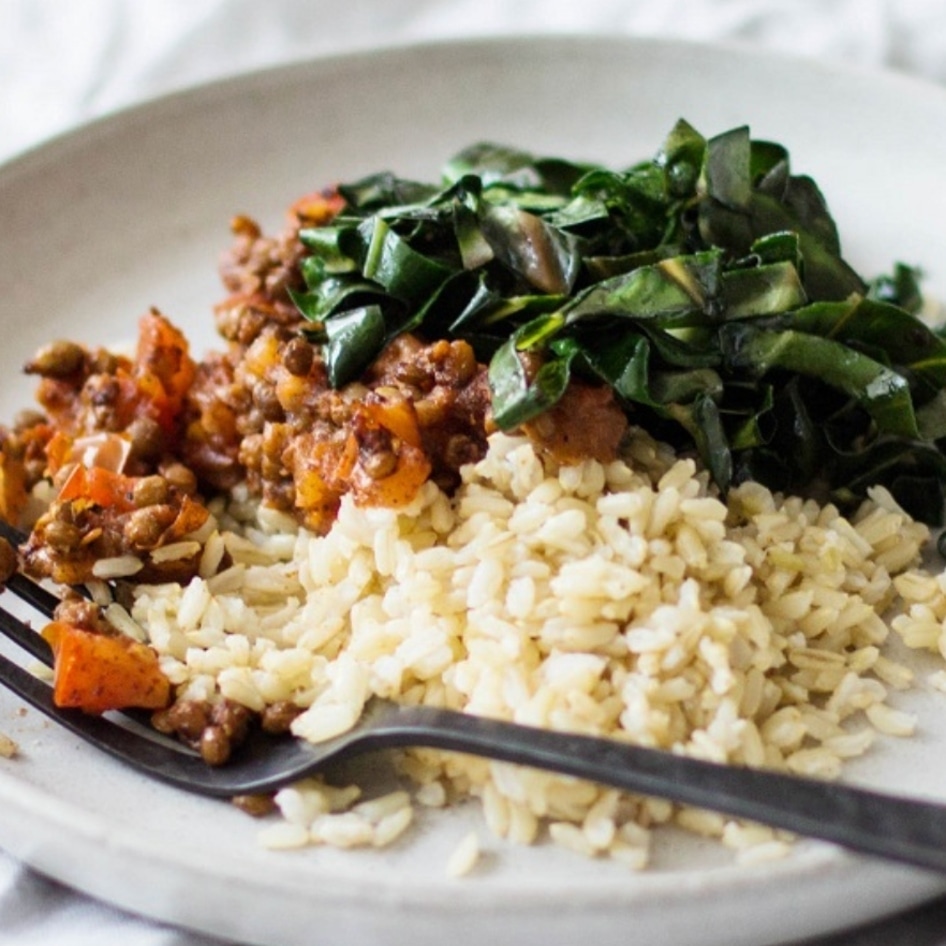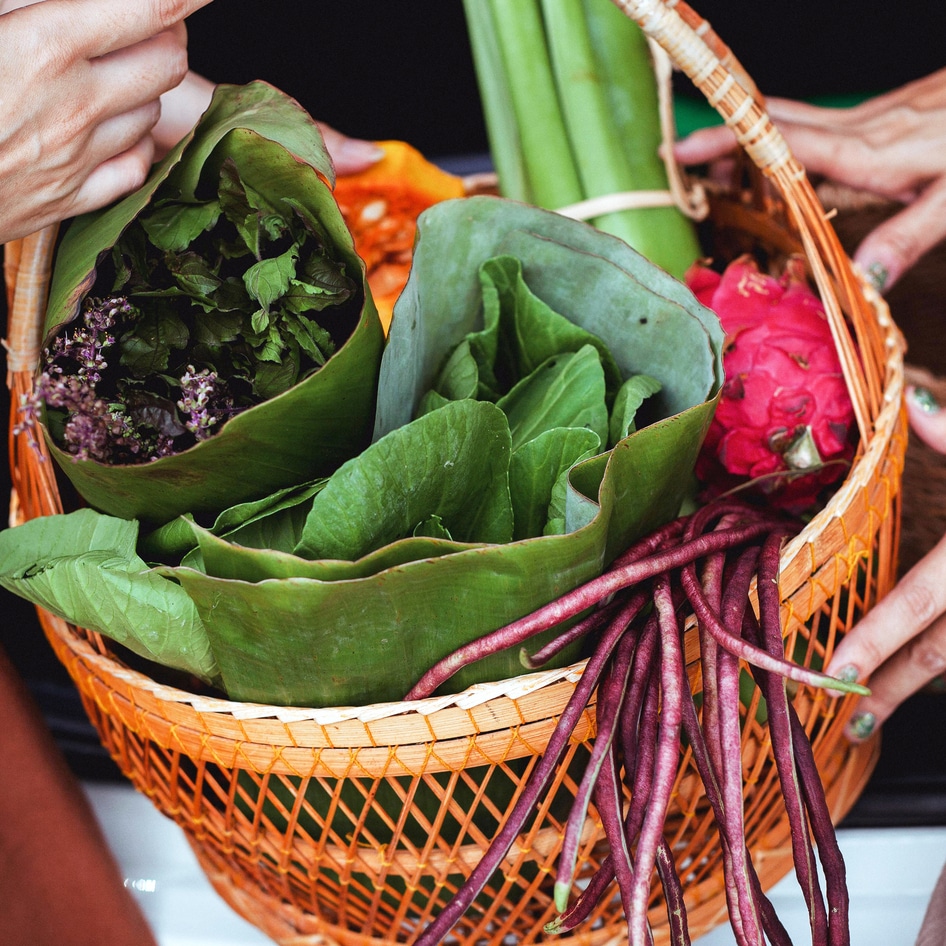Green Your Diet With More Than Juice
With all the health benefits of dark leafy greens, here are some simple ways to incorporate these powerful veggies into your everyday diet.
February 20, 2011
Fresh green juice is all the rage, but if you don’t have a juicer at home or the budget for a daily green smoothie from your local juice shop, how can you get all the health benefits from great leafy greens? We share some simple tips and explain the difference between these powerhouse vegetables so you can shop and eat smart. After all, greens are the new black.
It’s Easy Being Green
It can be easy to be a junk-food vegan nowadays with all the wonderful assortment of vegan doughnuts, nacho cheeses, candy bars, and ice creams. And while fun treats are good every so often, it’s best to balance your diet with good-for-you veggies. Tender, dark greens pack a powerful nutritional punch as they are full of fiber, beta carotene, calcium, iron, folic acid, and chlorophyll. In addition to those nutrients, collards, kale, and bok choy also contain a healthy dose of vitamin C.
Leaf Love
When shopping, always look for crisp, vibrant leaves and stay away from any that are yellowing, which indicate that the vegetable is old. Kale is in season from mid-summer through December and collard greens are best from January to April. Mild greens like collards, chard, bok choy, and spinach are perfect for adding to recipes since they won’t drastically change the taste of the final meal. Kale has a medium-sharp taste so it may be best as a side or as a salad, though, if you like a bold flavor, kale is great. Typically, one pound of fresh greens will equate to 2 to 3 servings since greens tend to shrink when cooked. Wash the leaves thoroughly before cooking to remove any dirt. You can store them in the refrigerator for a few days, but greens are best used fresh. Wrapping a damp paper towel around collard greens and kale before storing them in the fridge will help them stay crisp. Be sure to remove the tough stems of collards and kale before eating. The tender stems of spinach, bok choy, and chard can be eaten.
Ready, Set, Green
Not sure how to use these wonderful greens? Here’s a breakdown of their tastes and some ideas of how they can be used. Bok choy is sweet, mild, and tends to stay crisp when cooked. Try it in salads, stir fries, and soup. It’s a perfect veggie to add to your favorite Asian dishes like Tofu and Vegetable Lo Mein. Kale is tender with a slight peppery taste and can be boiled, steamed, and sautéed. Swiss chard can be found in three colors: red, green, or rainbow, and it’s a multipurpose green that can be used in just about any recipe, however, red chard may naturally “dye” other foods. Try pairing chard with sweet figs for the ultimate side dish (Rainbow Chard with Figs). Collard greens, which can steamed, braised, or sautéed, tend to shrink less than other greens, and have a mild, sweet flavor. Used widely in Southern cooking, collard greens are a hearty accompaniment for any home-cooked meals (try Southern Style Collard Greens). Known for being soft and sweet, spinach tends to shrink the most of all the greens so a large bunch of spinach will cook quickly. Eaten raw in salads or added to any dish, spinach blends in nicely with most meals.
During a busy workweek, it can sometimes seem tough to prepare fresh greens for dinner. Save some time by washing and cutting your greens on the weekend so they are ready when you need them. A simple salad spinner can make washing greens an easy (even fun) task. Or check your local grocery store’s frozen section for spinach, kale, or collard greens for a sure fire way to always have these on hand.
It can be easy to skip getting fresh vegetables in favor of ready-made meals, but adding greens to your diet, whether cooked or as juice, will rev up your health.
Recipes to Try
The following recipes are also perfect ways to add these healthy, fiber-rich veggies to your daily menu.
Simple Spinach Salad
Marinated Kale Salad
Cheezie, Crunchy Kale Chips
Lean Green Smoothie
Garlic and Greens Soup
JUMP TO ... Latest News | Recipes | Guides | Health | Subscribe







